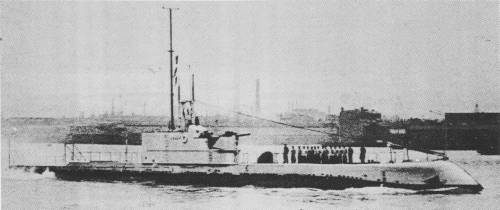- Author
- Smith, Peter
- Subjects
- History - WW2, History - WW1, Biographies and personal histories
- Tags
-
- RAN Ships
- HMAS Oxley I, HMAS J7, HMAS J1, HMAS Australia II, HMAS Tingira, HMAS Kanimbla I, HMAS Canberra I, HMAS Brisbane I, HMAS Platypus
- Publication
- June 1994 edition of the Naval Historical Review (all rights reserved)
Frank Edmund Getting was born on 30 July, 1899, the son of Mr. and Mrs. P.E. Getting of Quarantine Street, Manly, New South Wales.
In 1913 Frank applied for entry and was selected to join the first intake of Cadet Midshipmen at the Royal Australian Naval College, located at Osborne House, Geelong, Victoria. In 1915 the College was relocated to HMAS CRESWELL, Jervis Bay. It was from here that Cadet Midshipman Getting graduated in 1916. At the completion of his college training, Getting was one of twenty-three Midshipmen posted in January 1917 to the Royal Navy’s Grand Fleet in United Kingdom to undergo further training.
On 4 April, 1917 he was appointed to the new “Courageous” class light battle cruiser HMS GLORIOUS.
On 1 September, 1918 Getting was promoted to Acting Sub-Lieutenant and was transferred to the “Iron Duke” class dreadnought HMS BENBOW. It was during the five months on BENBOW that he was confirmed in the rank of Sub-Lieutenant.
Sub-Lieutenant Getting was given his first appointment to an Australian ship when he joined the submarine tender HMAS PLATYPUS on 25 March, 1919. PLATYPUS left Portsmouth on 9 April, 1919 escorting six “J” class submarines being sent out to Australia to set up the RAN’s Second Submarine Flotilla. During the voyage Frank was awarded his Bridge Watch Keepers Certificate aboard HMAS/M J1.
Getting returned to England on 25 September, 1919 for further submarine training. In the Torpedo Course at HMS VERNON he distinguished himself by being placed first in a class of forty-six. In August 1920 while in England he was promoted to Lieutenant … as a bonus his promotion was readjusted to April 15 of that year. On completing his courses, Getting returned to Australia to rejoin HMAS PLATYPUS on 3 February, 1921; however, he was appointed to HMAS/M J7 where he served until the 7 December, 1922.
When the Second Submarine Flotilla was disbanded, Lieutenant Getting spent 18 months from 8 December, 1922 on the boys’ training ship HMAS TINGIRA moored at Rose Bay, Sydney. This was followed by three months on the “Town” class cruiser HMAS BRISBANE, before leaving on 17 September, 1924 to return to the English submarine base HMS DOLPHIN for further submarine training.
On completion of his courses, Getting was transferred to the submarine depot ship HMS VULCAN on 6 April, 1925 where he joined HMS/M R4 as the First Lieutenant. Getting spent seven months on R4 before changing billet on November 18 to be the First Lieutenant of HMS/M L21 which was operating from the submarine depot ship HMS CONQUEST.
On 18 April, 1926 Lieutenant Getting was appointed to the depot ship HMS MAIDSTONE to begin his Submarine Commanding Officers Training Course which lasted until July. He was then transferred to HMS DOLPHIN to complete his training.
At the completion of the course, the training officer, Commander C. Cantlie, wrote this assessment on Lieutenant Getting: “A keen and capable officer who has taken great interest in the course and has carried out good attacks. He has plenty of self confidence and initiative and has a good power of command. He should make a good and reliable Commanding Officer of a submarine“.
Lieutenant Getting was the first Australian submarine officer to qualify at the Submarine Commanding Officers’ Course, commonly known as the “Perisher” (any officer who failed was automatically returned to the Fleet). He was rewarded with his first command, for on 3 August, 1926 he was sent back to HMS VULCAN to take over HMS/M H47. He remained in command for three months before returning in November to HMS DOLPHIN as spare Commanding Officer for submarines.

From 16 December, 1926 until 31 March, 1927 Lieutenant Getting continued to wait at DOLPHIN, however his fortunes were to change. He was appointed as First Lieutenant of the new Australian submarine HMAS OXLEY and joined her on April Fools Day, 1927.
OXLEY and her sister boat HMAS OTWAY left England late February 1928. Both submarines were given a severe battering by storms during the crossing of the. Bay of Biscay. When the boats reached the Mediterranean it was discovered there were cracks in the engine columns due to design faults. The submarines were laid up in Malta for ten months while the problems were corrected. Within the first few weeks of their lay up, the Royal Navy officers were recalled to England. Lieutenant Getting was promoted to Lieutenant Commander and appointed as OXLEY’s Commanding Officer on the 15 April, 1928.




